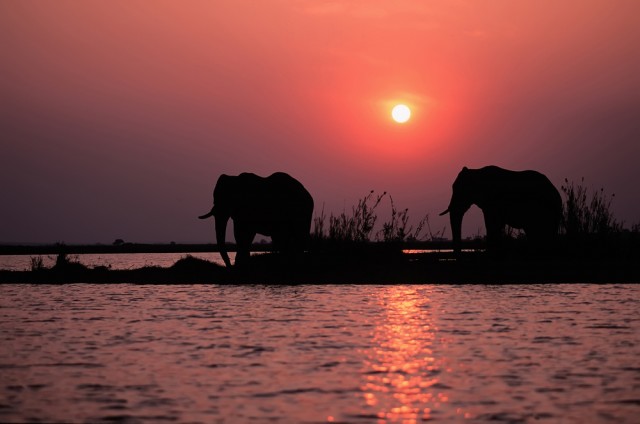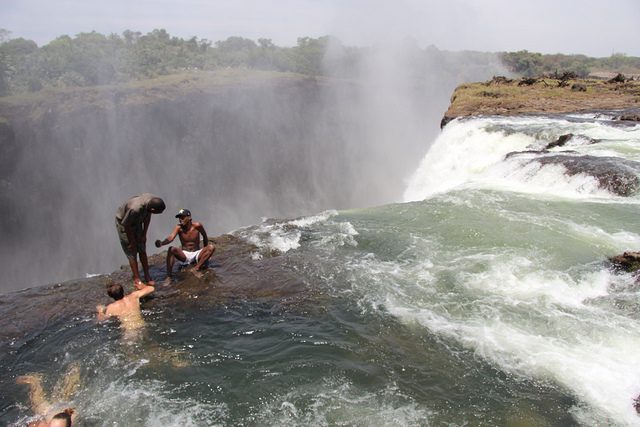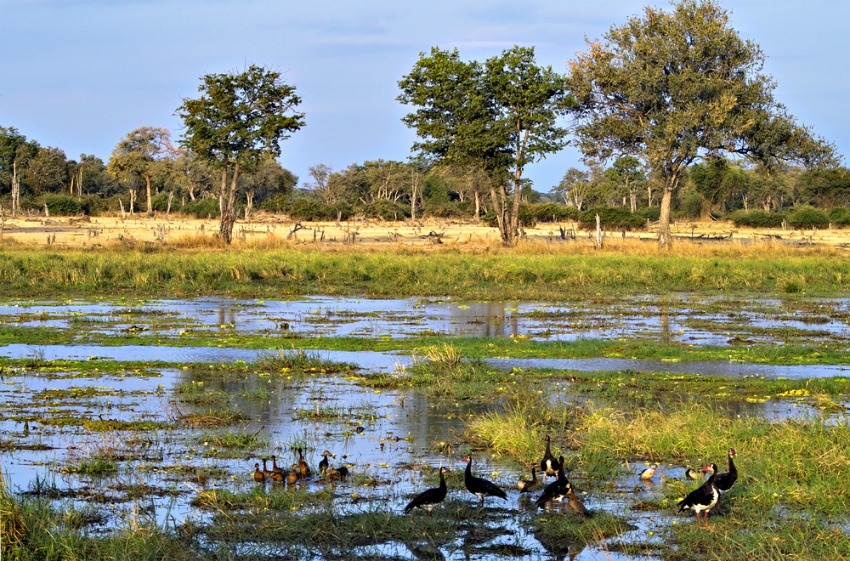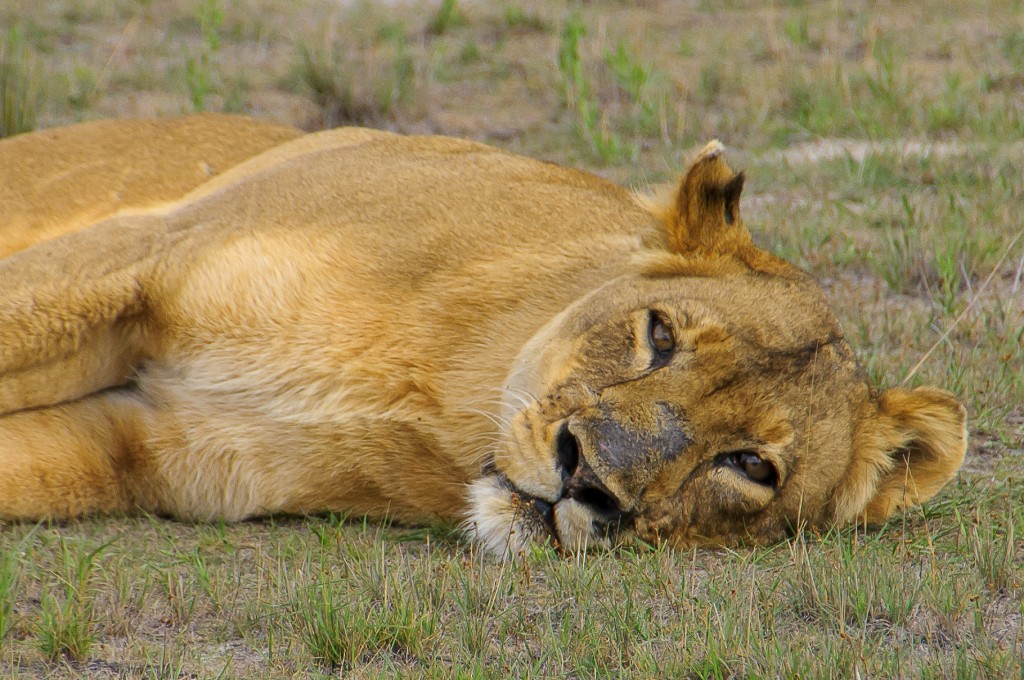Some say that Zambia is not only a beautiful country, but a blessed one — after all, it is named after the Zambezi River, which translates to “God’s friend.” While somewhat overlooked compared to the neighbors it rubs elbows with (such as Namibia, Tanzania, and Botswana), Zambia is worth checking out because of the abundance of wildlife, city life, and fun to be had. Here are 15 facts, figures, and delightful shreds of information that are worth knowing before you book a trip to Zambia!
This article originally appeared on AFKInsider.com.
1. Its history is long and complicated
Archaeologists have found evidence of human habitation in Zambia dating back 3 million years. For hundreds of thousands of years the hunter-gatherer Khoisan people roamed there–until the middle ages, when Bantu tribes began to move in. Because it was so far inland, European colonizers didn’t reach Zambia until 1888, when it fell under the control of Cecil Rhodes’ British South Africa Company. It was called Northern Rhodesia until 1923, when the British took over governance. On October 24, 1964, after years of nationalist agitation, the Republic of Zambia declared independence.
2. The real Dr. Livingstone lived there
Dr. David Livingstone was a Scottish medical missionary and scientist who traveled to southern Africa in the mid-1800s and became legendary for his expeditions into the heart of the continent. He was the first Westerner to discover Victoria Falls, one of the first foreigners to journey all the way across Africa from Angola to Mozambique, the first to attempt to navigate the entire length of the Zambezi River, and most famously, tried to find the source of the Nile. The quote “Dr. Livingstone, I presume?” comes from the time he was discovered wildly bearded in the jungle in 1871 by reporter H.M. Stanley, after being lost for six years. Livingstone died in 1873; during his lifetime he never achieved his goal of widely spreading Christianity throughout Africa and fully “civilizing” the societies he came upon. However, Stanley’s book about Livingstone influenced an entire generation of missionaries into the region. (His heart literally still remains in Zambia, buried under a Myula tree at the Livingstone Memorial in Itala.)
3. It’s got the biggest (man-made) lake
Lake Kariba is the largest man-made body of water (by volume) in Africa. Situated on the border between Zambia and Zimbabwe, stretching for nearly 140 miles (223 kilometers), Lake Kariba was created between 1958 and 1963 after the construction of the Kariba Dam on the Zambezi River. Before introducing water, the land in the Kariba Gorge was burned, creating lush soil, which has in turn allowed for rich marine life to flourish and a thriving fishing industry to sustain itself. Fun fact: because of the huge amount of water (over 200 billion tons) in the lake, seismic activity in the area has increased, leading to nearly 20 earthquakes measuring greater than 5 on the Richter Scale!
4. English is the national language
The official national language of Zambia is English (though only about 2% of the people are native speakers), which is widely used in tourism and business. All of the additional 70-plus languages and dialects spoken in the country are from the Bantu language family, and are closely interrelated. This African Mecca guide, which provides a long list of general greetings and words in both the Nyanja and Bemba languages, is highly recommended to study before traveling. “Shalapo!”
5. Lusaka, the capital, is the nerve center
Lusaka is the most populous city in Zambia, and also one of the fastest-developing cities in all of Africa. It used to be just a stopover on long-distance treks to Cape Town, but now daily flights from Amsterdam, London, Cairo, and scores of African countries shuttle thousands of curious visitors to its dusty streets every year. In Lusaka, population 1.3 million, life is lived on the streets. The Soweto Market is the quintessential marketplace, bustling and full of produce and used goods. Other markets like the Kabwata Cultural Village and the Lusaka City Market provide varying experiences and options. The Manda Hill Mall with its ubiquity of stores opened in 2000, and seems to be the jewel of many Lusakaians eyes. What else is there to do here? Walking around, eating, visiting the Botanical Gardens, trying not to fall into an open manhole… yep, that’s highly advised (seriously, the city is infamous for those!).
6. Life expectancy is low
Here’s an interesting, albeit grim fact: the life expectancy in Zambia as of 2012 was just 52 years old. And only a decade years before that, it was a paltry 37 years old. The improvement, though not great, is a result of better medical treatment for life-threatening diseases like tuberculosis and AIDS/HIV. Being one of the world’s poorest countries, it will take a while longer for health outcomes to rise to Western levels.
7. It’s got massive termite mounds and mushrooms
Who would’ve thought that these two natural phenomena would reach their zenith of existence together in the same country? Well, in Zambia, termite houses sometimes get to be the size of, well, houses! After the rains in November, termites sprout temporary wings and fly all over the place–often into people’s homes, and many Zambians will fry ’em up for the protein! For an alternative food source, Zambians will munch on the world’s largest edible mushroom, Termitomyces titanicus, a.k.a “Chingulungulu.” This bad boy is worth hunting for at the beginning of Zambia’s long rainy season.

Shutterstock
8. There’s more than one waterfall
Victoria Falls, alias Mosi-oa-Tunya, “The Smoke that Thunders” is the world’s largest sheet of water, roaring down into the Zambezi River. But it’s not the only major waterfall in the country. Others include Nyonge Falls, Lumangwe Falls, Kundalila Falls, and Africa’s second largest, Kalambo Falls. Oh, and once you’re done boating, swimming, or gawking at those four, there are still 12 more falls in Zambia to discover!
9. It’s a great place for a safari
Kafue National Park, Zambia’s largest protected wildlife preserve, is about the size of the country of Wales. It’s so massive that it spreads out over three major provinces in the country. It’s size makes it exceptionally diverse: it’s got interesting geology (especially the area around the Hook Granite Massif), evergreen trees, woodlands, marshes, savannas, and the Zambezian flooded grasslands. And did we mention the animals? There are 55 species, including the cheetah, who prances around as the king here, and his royal court of African wild dogs, hippos, crocodiles, lions, and a huge variety of hoofed animals.
10. Adrenalin Bathing
So you’ve tried the bungee jumping or white-water rafting and need a new adrenaline kick? Come to the falls in November when the water level is lower, and try a water hole with a difference. ‘Devil’s Pool’ (aptly named if you are off a nervous disposition!) lies at the very edge of the falls, with a 105-meter (350 foot) drop on the other side, so tread carefully. lthough it may look terrifying, it’s said to offer the experience of swimming in a whirlpool bathtub. And it’s definitely the experience of a lifetime!
11. South Luangwa National Park
This may not be the largest of Zambia’s national parks, but it is the most popular. The park is situated on the Luangwa River, which provides a lifeline for the abundant wildlife, including elephants, giraffes, buffalo and hippos. It’s also a bird-watchers paradise with over 400 species. Getting there is easy: you can either fly from Lusaka, or have the experience of a 10-hour drive. But why not make up for the long bus journey with a little indulgence? Treat yourself to a night at a former presidential retreat, in top end luxury. Chichele Lodge was the retreat of the former Zambian president Kenneth Kaunda (1964-91).
12. No going Dutch here!
Fancy a bit of shopping in Lusaka? Every last Saturday of the month, Zambia’s largest open-air market sets up shop at the Dutch Reformed Church in the Kabulonga area. Artisans from Zambia and neighboring countries throng here to sell their wares. It’s one of the few places where you can find Zimbabwean soap stone sold next to Zambian copper plates. Hungry after all that bargaining and shopping? Pick up some local food while you shop. Bargainers rejoice–you’re expected to barter! If you miss this market, try the smaller Sunday Market at the Arcades Shopping Centre in Lusaka that happens every week.
13. Get away from it all
Western Province (also known as Barotseland) is a relatively remote area located on the border of Angola. It’s worth the effort to get here though, as it houses the Liuwa Plains National Park, the most isolated and least visited of all the national parks in Zambia. There’s abundant birdlife (over 330 species) as well as African wild dogs, hyenas, wildebeest and just a couple of lions. And who knows, you might see the Lady Liuwa, the movie star in the National Geographic film “The Last Lioness” who has turned to humans for companionship (but now has her own kind to hang out with as well). What other lion can you see on safari that has her own Facebook page? And if that wasn’t enough, in November, the wildebeest head towards Namibia for Africa’s second-longest migration.

Pixabay CCO
14. Holy bats!
October brings the world’s largest migration of giant fruit bats at Kasanka National Park. You’ll either love it or find the expeirence terrifying. But just remember these are harmless critters. It’s a beautiful and awe-inspiring spectacle as about eight million bats fly in sky. One for young David Attenboroughs everywhere.
15. There’s so much more to know…
Zambia prides itself on religious freedom: Christianity is practiced by over 60% of the population, while the rest practice indigenous religions, Hindi, and Islam. ‘Kwacha’ is the name of the currency. Nshima is the most common staple food item in Zambia–a prototypical African blend of ground maize and water. There are two major seasons: warm/wet (December-April), and cool/dry (May-August). Copper and iron have been mined for nearly 2000 years in Zambia, and the country has the world’s fifth largest reserves of copper. The median age is 16.46 years. Zambians are wonderful people who love to pass the time telling stories. Go there and hear some!
Want to discover the finer side of Africa? Sign up for our weekly newsletter.













